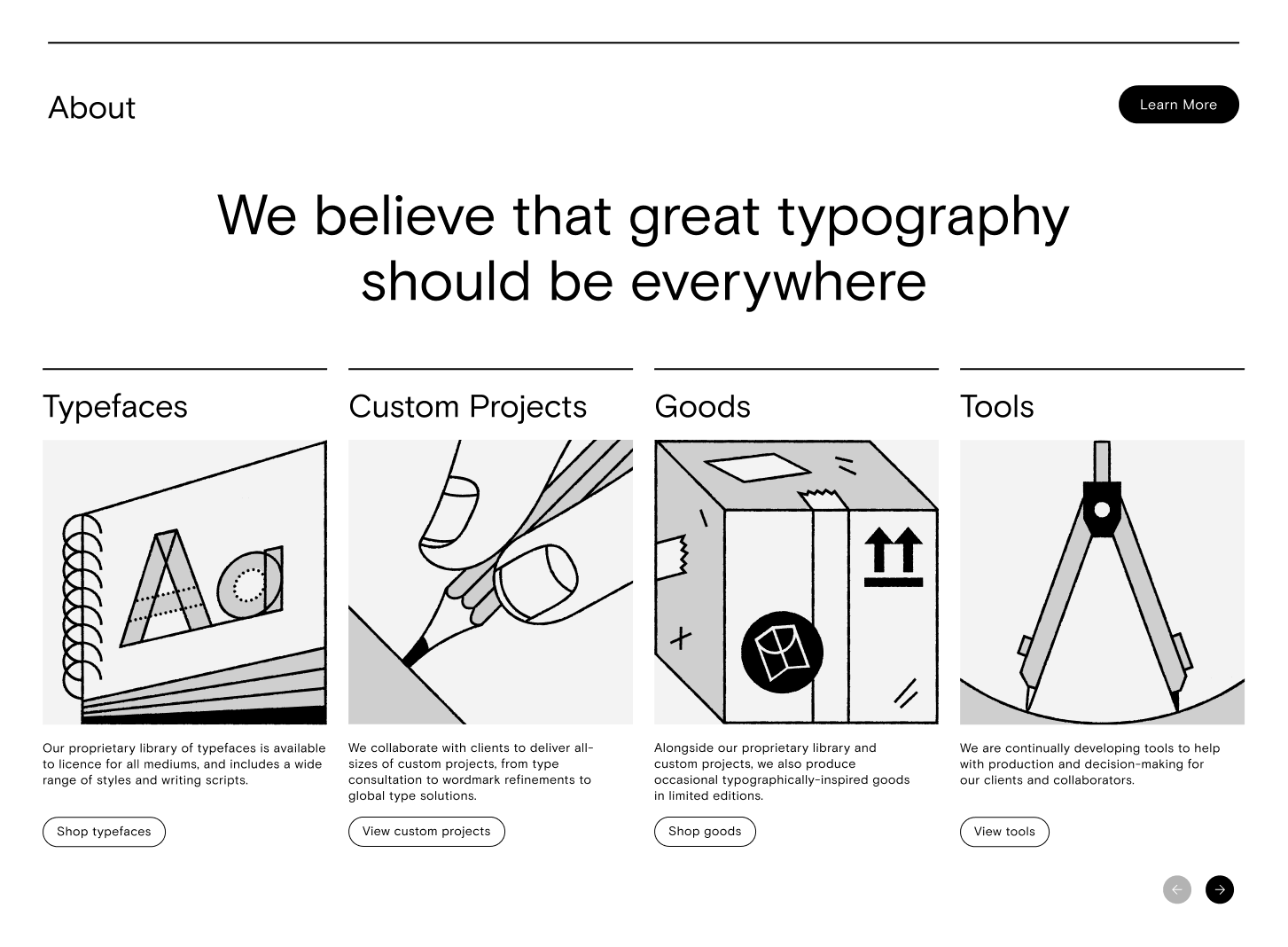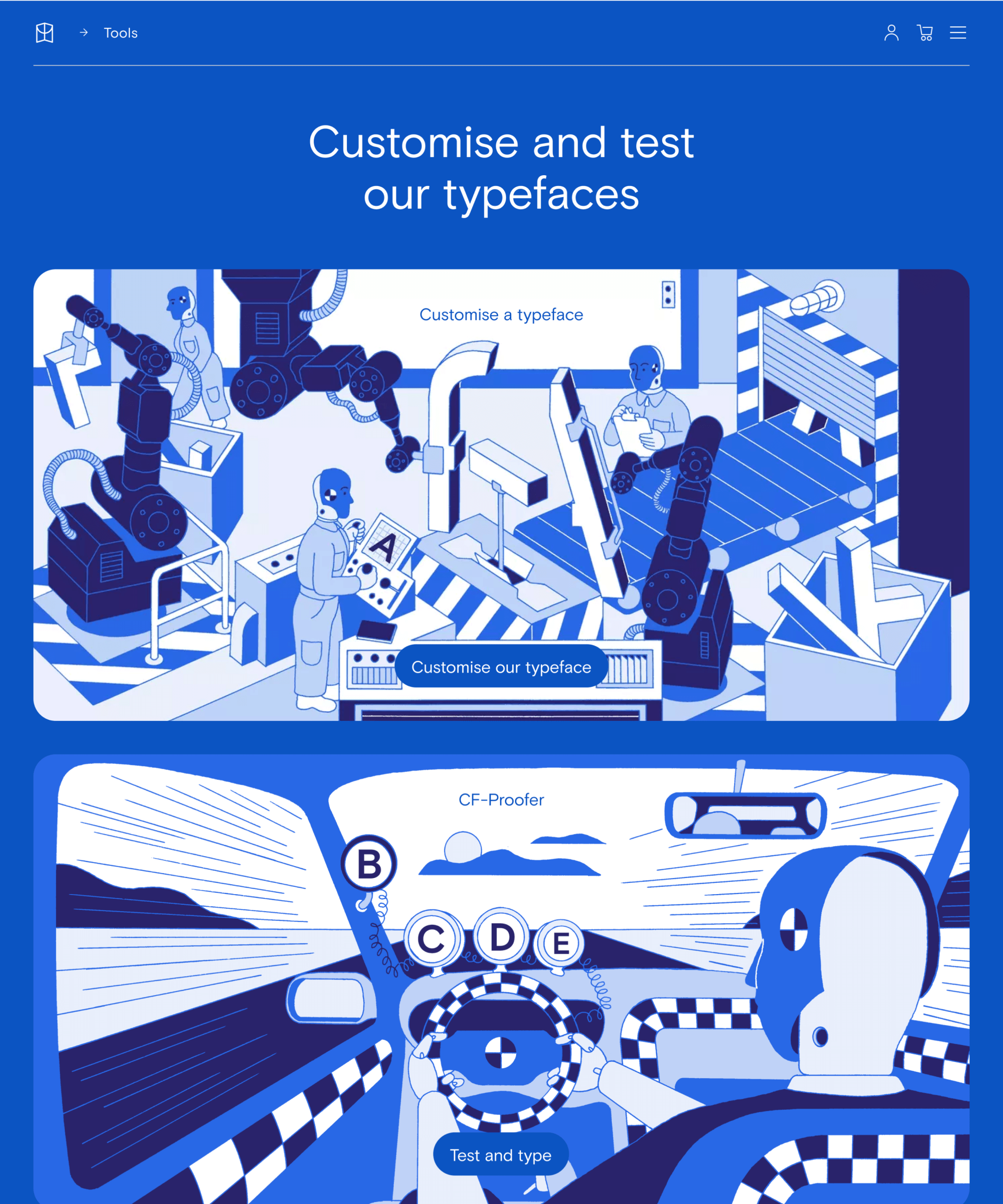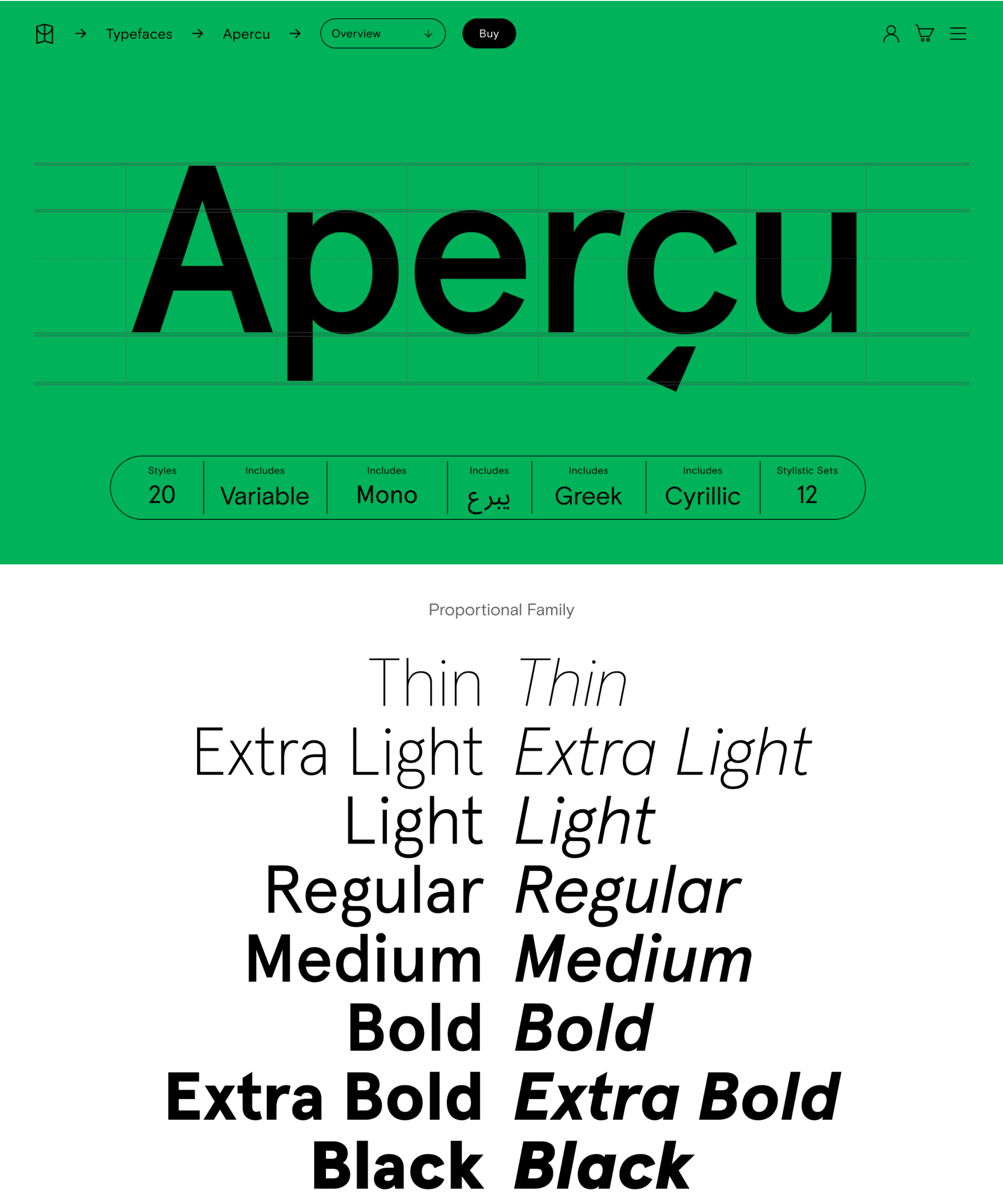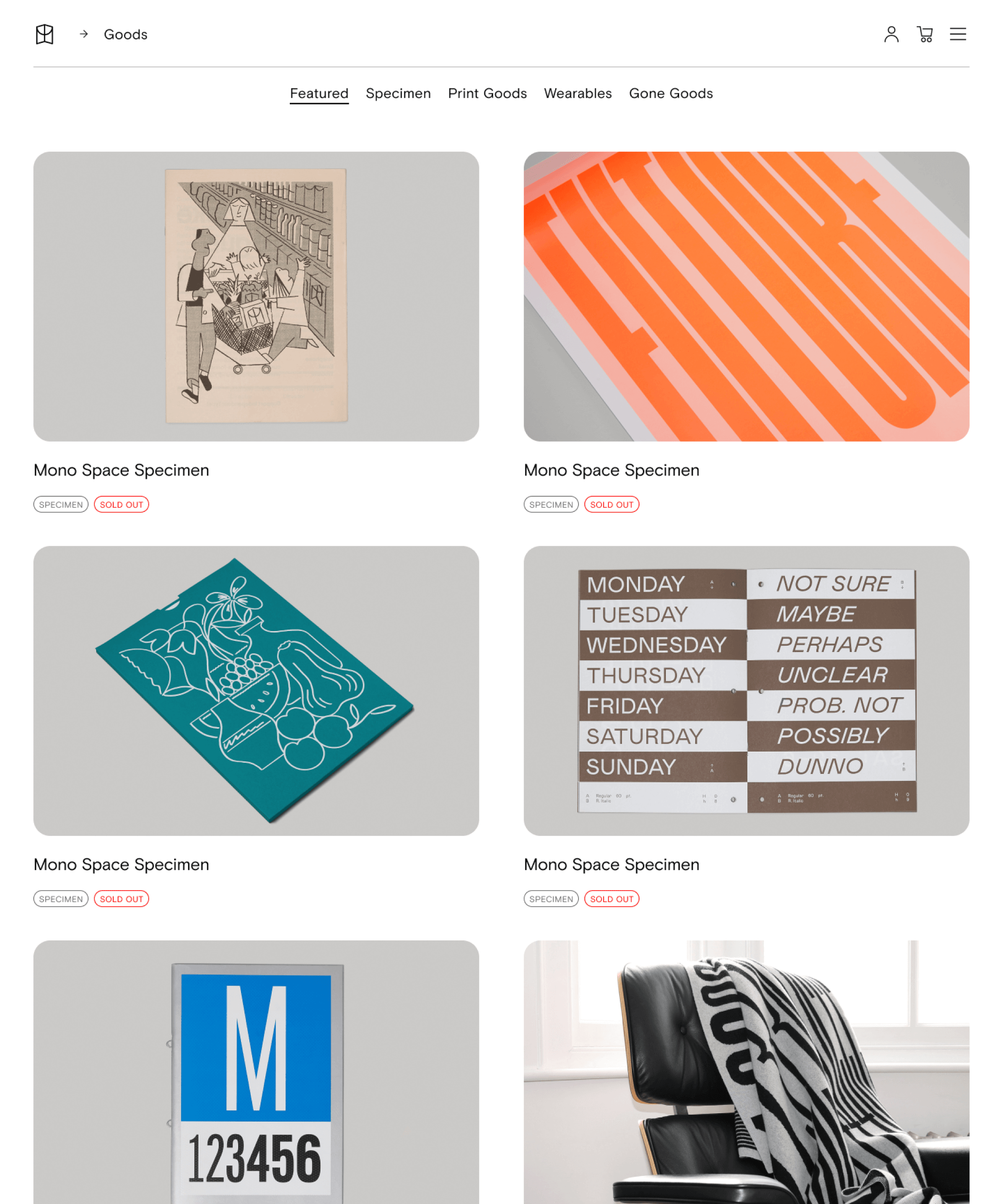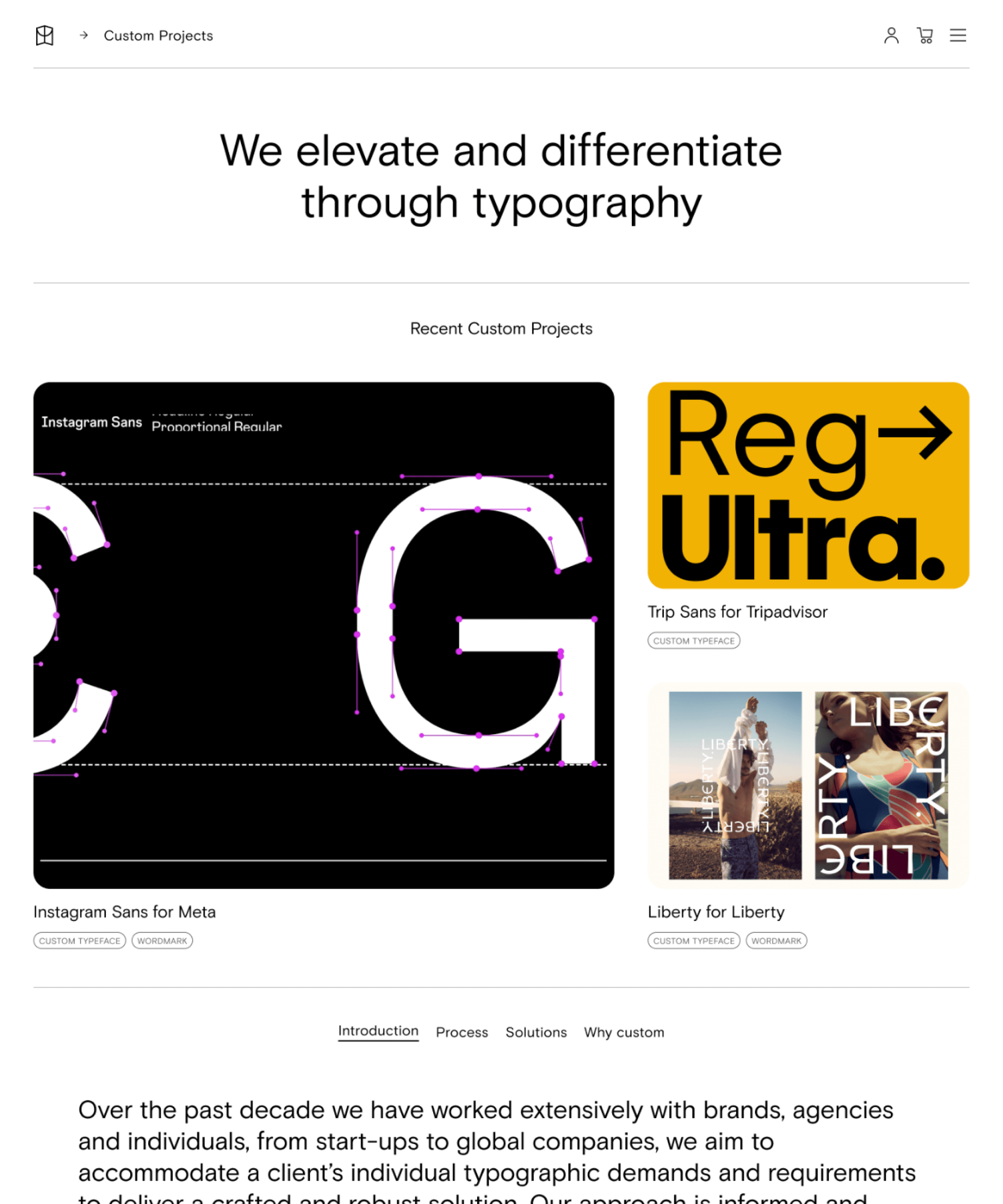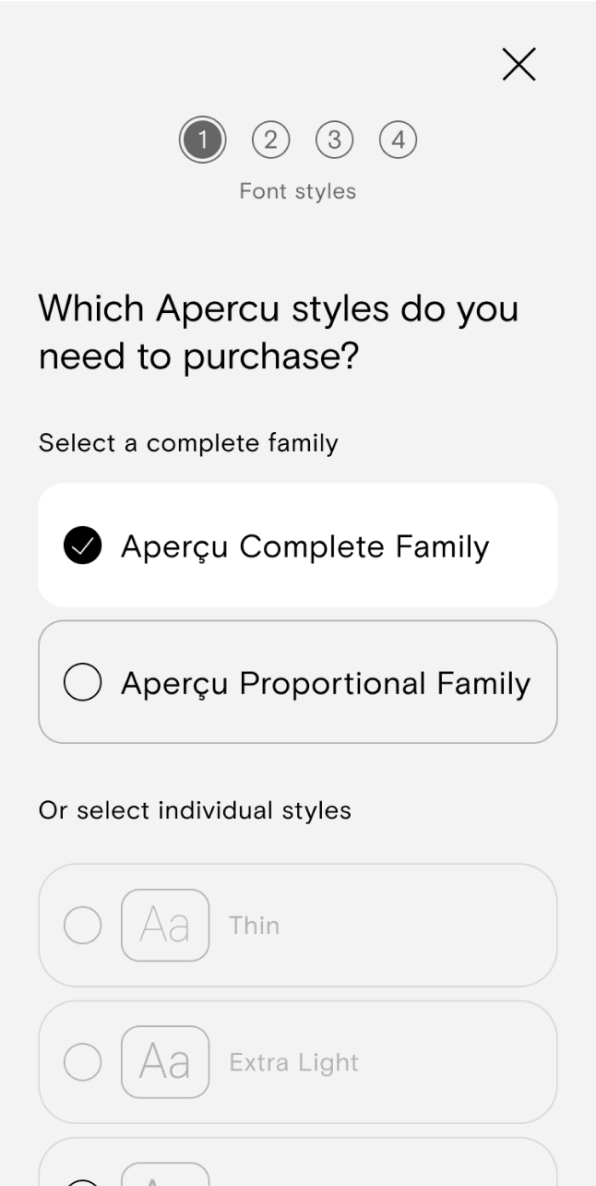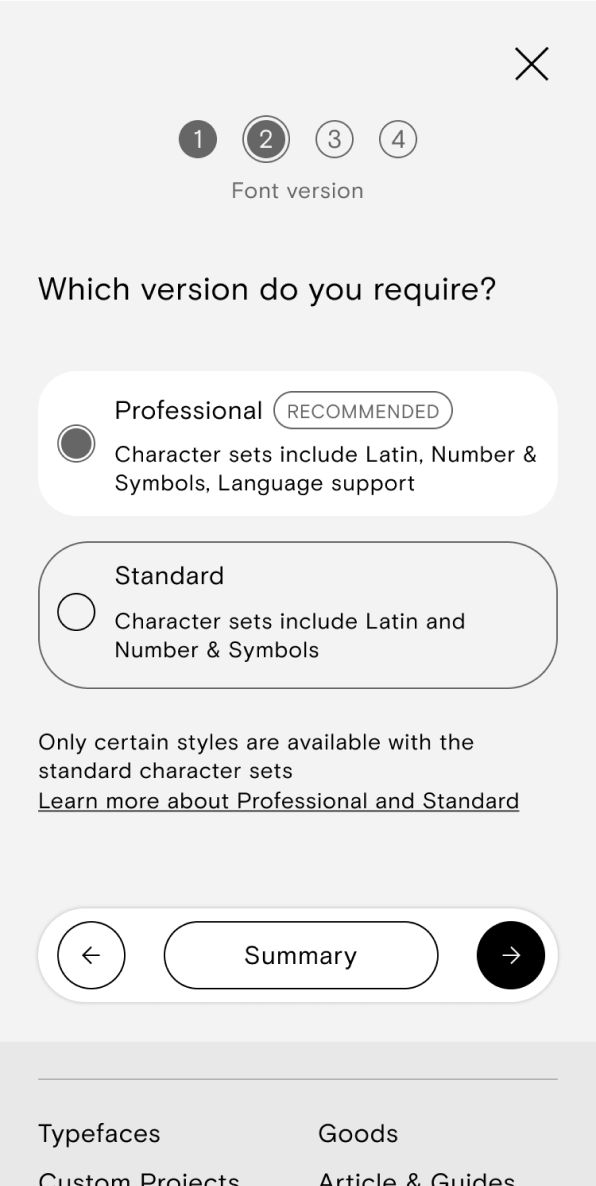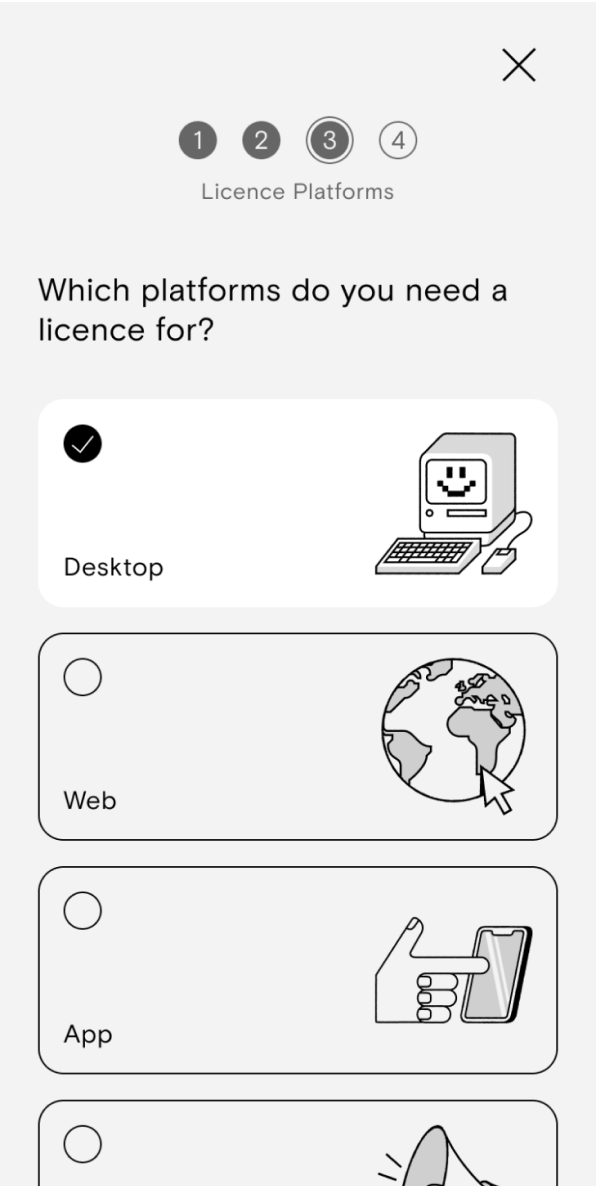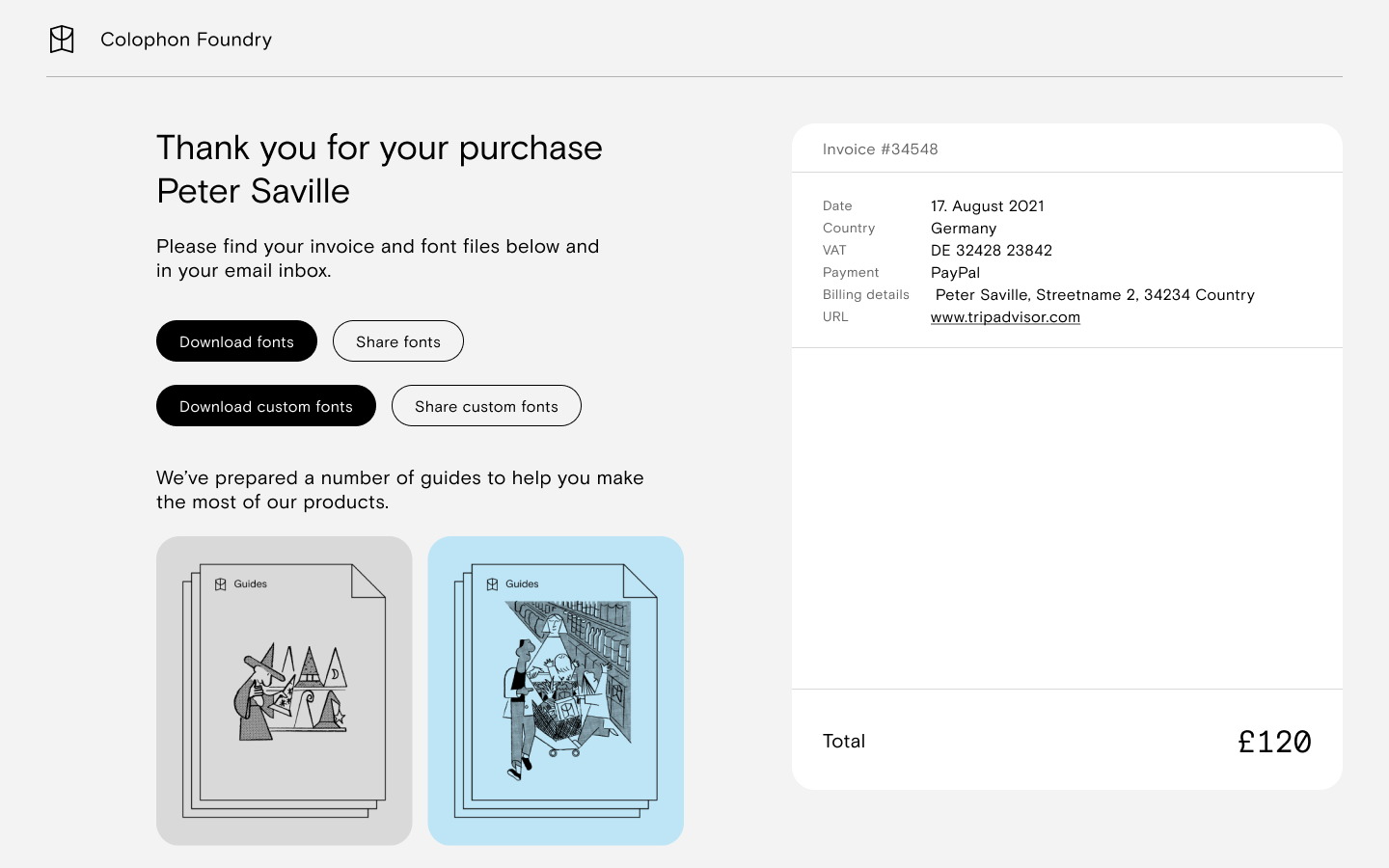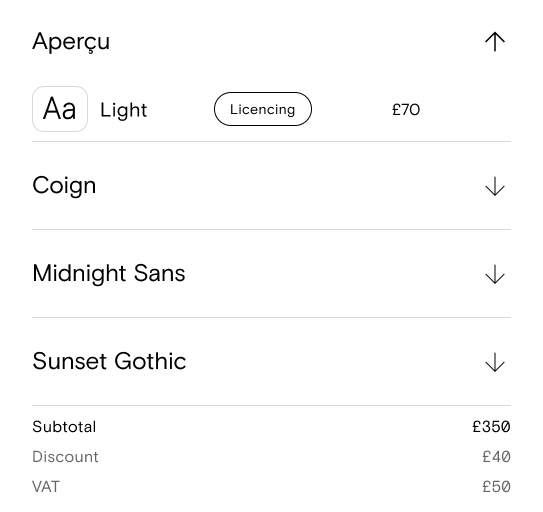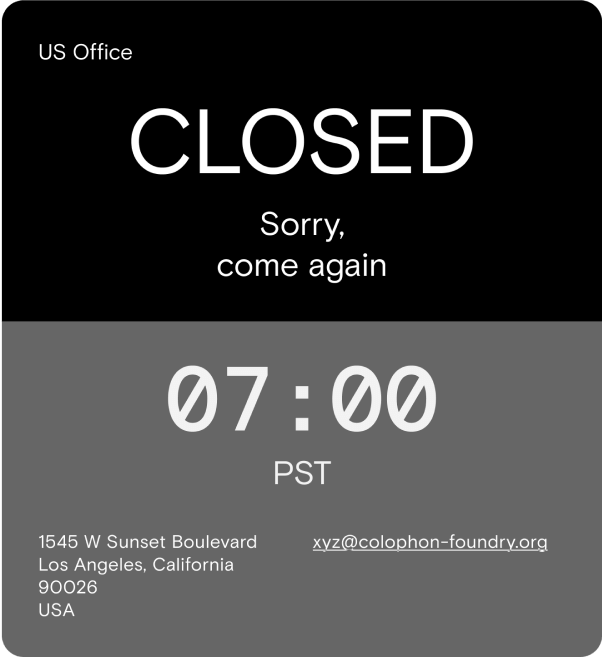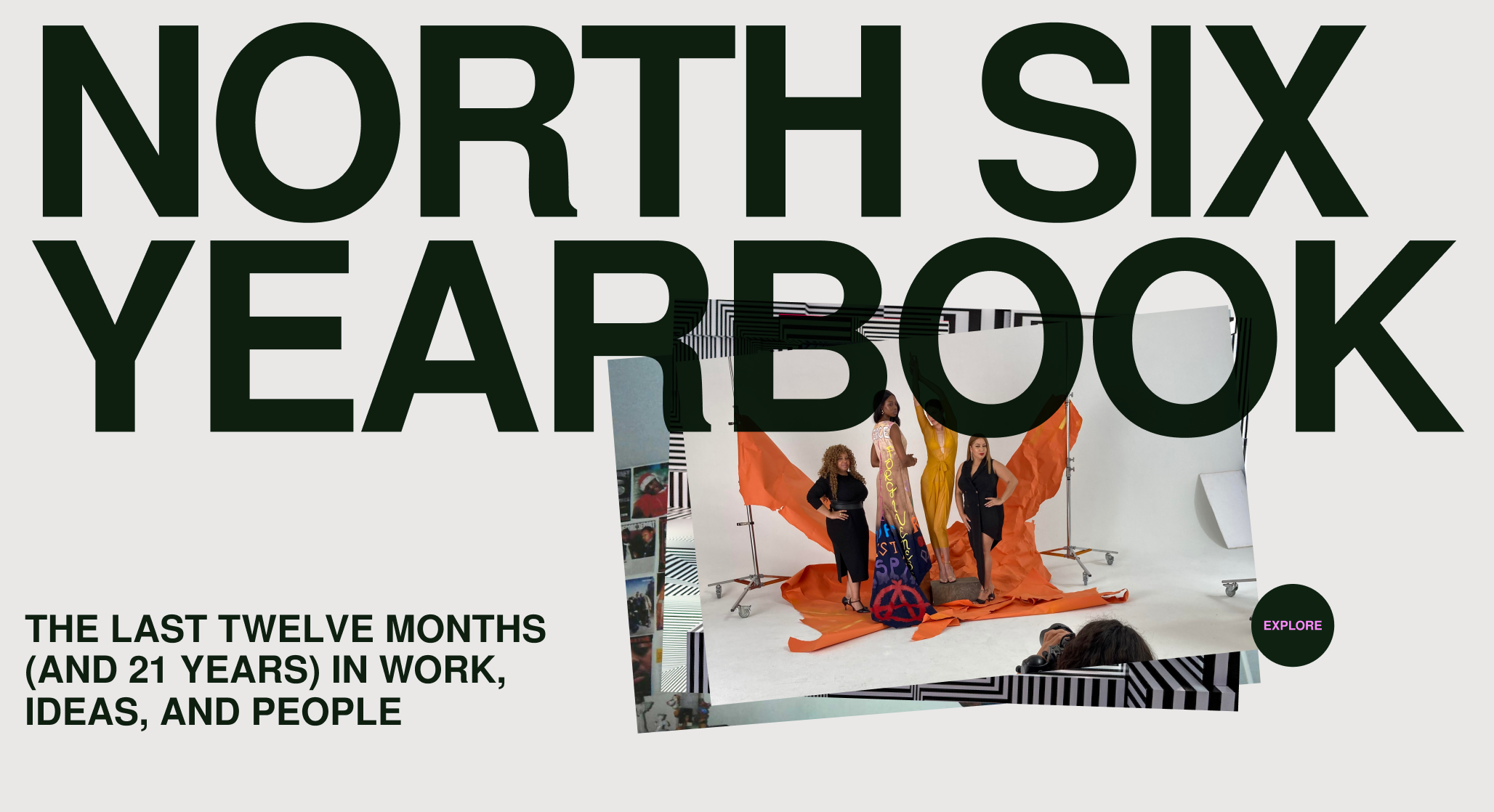Our approach to accessibility was to ensure that the product we delivered could be used by everyone — whilst having an equivalent user experience — however they encountered
it.
We followed Web Content Accessibility Guidelines accessibility principles which led to
novel solutions to typical design patterns.
For example, whilst interactive-heavy marquee elements
were perfect for showcasing the breadth of Colophon’s library, they’re traditionally not accessible
to assistive devices. For Colophon, we applied specific attributes to the cards within the
marquee to ensure they can be skipped, paused or cycled using the keyboard.
Whilst this feature is invisible to most users, the extra time and care taken to create
bespoke solutions to ensure all users are catered for helped us deliver a product that
aids conversion, but most importantly, reaches more people.

